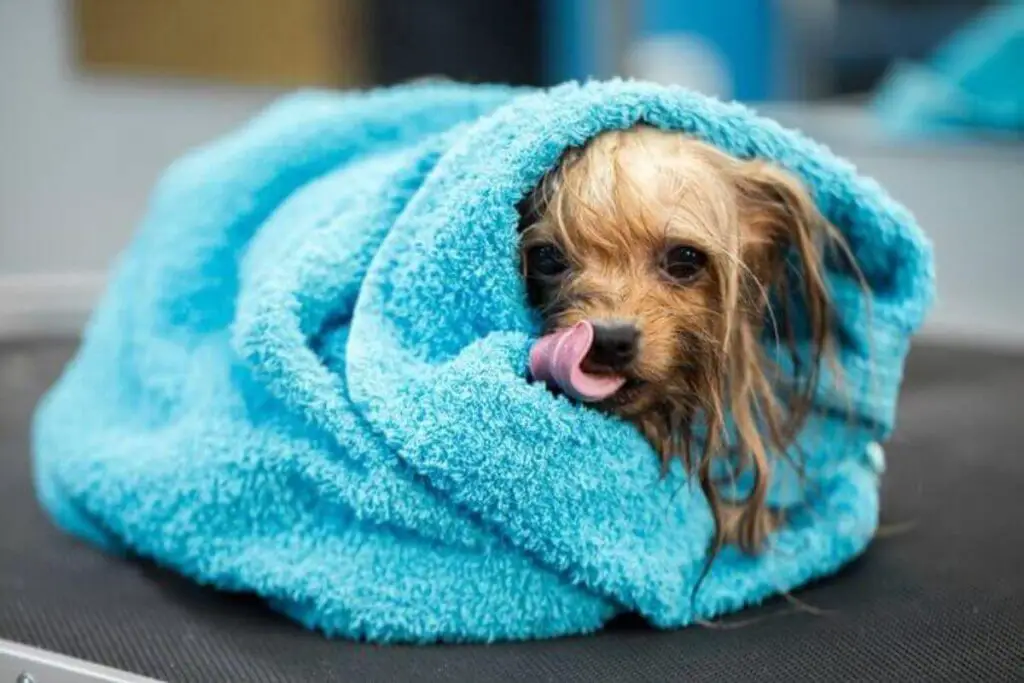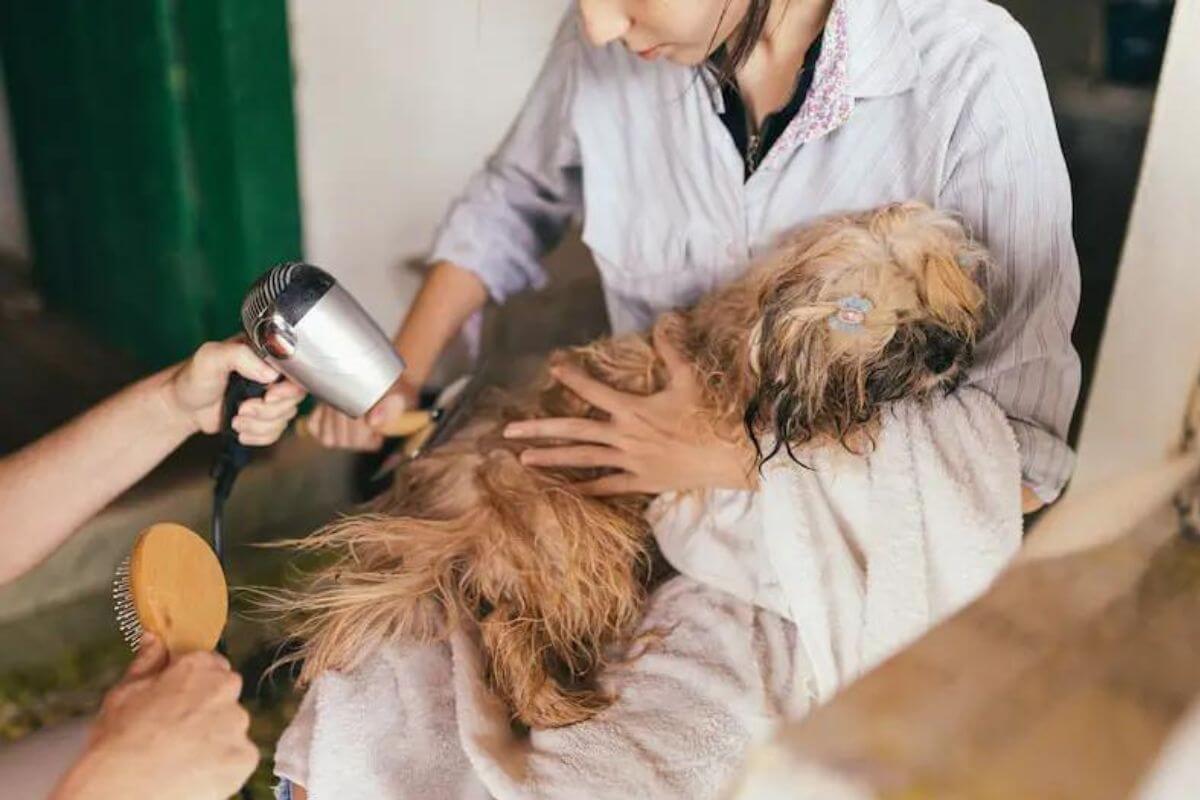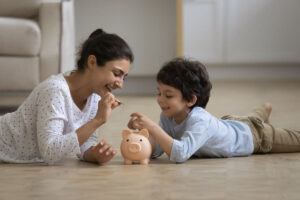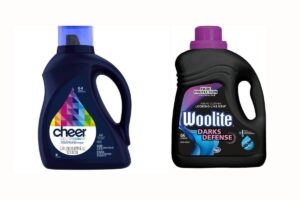Bathing your dog can be an adventure, and the sight of them vigorously shaking off water afterward is a common scene. But why do dogs shake after a bath? Understanding the reasons behind this behavior can provide insight into your canine companion’s natural instincts and make the post-bath experience more enjoyable for both of you.
1. Instinctive Response to Water:
The sight of your dog vigorously shaking after a bath is not just a random behavior; it’s deeply rooted in their instinctive response to water. Understanding this natural inclination provides insights into your canine companion’s behavior and sheds light on their evolutionary adaptations.
1. Drying Off Efficiently:
- Dogs have a dense coat of fur that can retain a significant amount of water after a bath. The instinct to shake is an efficient method to remove excess water quickly. This behavior is an evolutionary trait that aids in their survival by helping them dry off rapidly.

2. Mimicking Self-Grooming:
- The post-bath shake closely mimics a dog’s natural self-grooming behavior. Dogs, in the wild, use their tongues to clean and dry their fur. The shake replicates the rapid, full-body movements that aid in the removal of water and the restoration of their coat to its familiar state.
3. Temperature Regulation:
- Dogs are sensitive to temperature changes, and wet fur can make them feel colder. The instinctive shake serves the purpose of temperature regulation, helping them dry off and maintain their optimal body temperature. This behavior is especially crucial in colder climates.
4. Removing Water from Ears:
- Dogs have specialized ear structures that can trap water during a bath. The vigorous shake includes a head shake, which helps expel water from their ears. This action prevents potential ear infections and discomfort associated with trapped water.
5. Dislodging Debris:
- Beyond water removal, the shake serves to dislodge debris or foreign particles that may have accumulated in the fur during the bath. This behavior is not only about drying off but also about maintaining overall cleanliness and comfort.
6. Maintaining Water-Repellent Coat:
- Some dog breeds have water-resistant coats that are designed to shed water efficiently. The shake is a mechanism to maintain the water-repellent properties of their coat. This adaptation is especially prevalent in breeds that were historically used for water-related tasks.
7. Instinctive Grooming Ritual:
- Dogs, as descendants of wolves, have a strong instinct for grooming. The post-bath shake is an extension of their grooming ritual, helping them restore their coat to a condition that aligns with their natural instincts for cleanliness and self-care.
8. Expressing Discomfort:
- In some cases, dogs may shake more vigorously if they are uncomfortable or stressed during the bath. The instinct to shake can be an expression of discomfort, and understanding your dog’s body language is essential in gauging their overall well-being.
9. Ancestral Behavior:
- The instinctive response to water is deeply rooted in a dog’s ancestry. Wild canids, such as wolves, exhibited similar behaviors after exposure to water, reinforcing the idea that the post-bath shake is a continuation of ancestral instincts.
10. Bonding and Communication:
- Interestingly, the post-bath shake can also serve as a form of communication between dogs and their human companions. By shaking off water, dogs may be seeking interaction, attention, or reassurance, creating a bonding moment between you and your furry friend.
Understanding your dog’s instinctive response to water goes beyond a simple shake—it’s a fascinating glimpse into their natural behaviors and adaptations. Embracing and appreciating this instinctive ritual can deepen the connection between you and your canine companion during every post-bath shake.
2. Removing Water from the Coat:
- The primary purpose of a dog’s vigorous shake after a bath is to remove water from their coat. Unlike humans, dogs don’t have the luxury of towels or blow dryers, so shaking is their efficient and instinctive method to dry off quickly.
3. Maintaining Body Temperature:
- Dogs, especially those with thick or double coats, shake to regulate their body temperature. Wet fur can make them feel colder, and shaking helps expedite the drying process, preventing them from getting too chilly. This behavior is particularly vital in colder climates.
4. Natural Grooming Instincts:
- Dogs are meticulous groomers, and shaking after a bath is an extension of their natural grooming instincts. By shaking, they distribute natural oils produced by their skin, helping to keep their coat healthy and maintaining its water-resistant properties.
5. Discomfort or Anxiety:
- For some dogs, bath time can be stressful or uncomfortable, especially if they are not accustomed to it. Shaking can be a way for them to release built-up tension or anxiety related to the bathing process. Ensuring a calm and gentle approach during baths can help minimize stress.
6. Post-Bath Energy Release:
- Bathing can be a stimulating experience for dogs, and the post-bath shake is often accompanied by a burst of energy. This is a normal part of their behavioral response and is akin to a human stretch or shake-off after a refreshing activity.
7. Mimicking Natural Behaviors:
- In the wild, animals often shake themselves off after exposure to water, whether from rain or swimming. Domesticated dogs retain this behavior, even if the water source is a bathtub. It’s an ingrained response that aligns with their natural instincts.
8. Breed and Individual Variations:
- Different dog breeds may shake to varying degrees after a bath. Some breeds with water-resistant coats may shake more vigorously, while others may shake less. Individual temperament, past experiences with water, and the dog’s overall comfort with the bathing process also contribute to variations in shaking behavior.
9. Expressing Displeasure:
- In some cases, a dog may shake as a way to express displeasure or protest against the bath. Understanding your dog’s body language and providing positive reinforcement during and after the bath can help create a more positive association with the experience.
10. Towel Drying and Positive Reinforcement:
- While dogs instinctively shake to dry off, using a towel to gently dry them can help speed up the process and minimize the mess. Additionally, offering positive reinforcement, such as treats or praise, after the bath creates a positive association, making future baths more enjoyable for your dog.
In conclusion, the post-bath shake is a complex behavior influenced by a combination of natural instincts, breed characteristics, and individual preferences. By recognizing and respecting your dog’s need to shake, you can enhance the bathing experience and strengthen the bond between you and your furry friend.
Making Bath Time a Tail-Wagging Affair: Tips for a Positive Post-Bath Experience
Bathing your furry friend doesn’t have to be a dreaded chore—rather, it can be an enjoyable and positive experience for both you and your dog. Here are some tips to ensure that post-bath time is met with wagging tails and happy memories.
1. Gentle Introduction to Water:
- Start by introducing your dog to water gradually. Let them explore shallow water or play in a kiddie pool to build positive associations with the element. This step helps acclimate them to the idea of bathing.
2. Dog-Friendly Products:
- Choose gentle, dog-specific shampoos and conditioners. These products are formulated to suit your dog’s skin and coat needs, ensuring a comfortable and irritation-free bath experience.
3. Positive Reinforcement During Bathing:
- Turn bath time into a positive experience by offering treats, praise, and gentle petting. Positive reinforcement helps your dog associate bathing with rewards, making them more likely to view it as an enjoyable activity.
4. Warm Water and Comfortable Environment:
- Ensure the water is lukewarm, and create a comfortable bathing environment. Dogs are more likely to enjoy the experience if they feel at ease. Keep the room warm, and use non-slip mats to prevent slipping.
5. Short and Enjoyable Sessions:
- Keep bath sessions short, especially if your dog is new to the experience. Gradually increase the time as they become more comfortable. Short and enjoyable sessions contribute to positive associations with bathing.
6. Towel Drying and Playtime:
- After the bath, gently towel dry your dog and follow it with playtime or a walk. This helps them burn off excess energy and associates bath time with enjoyable activities, creating positive memories.
7. Familiarize with Bathing Tools:
- Introduce your dog to bathing tools during non-bath times. Let them become familiar with brushes or rubber scrubbers to reduce stress during actual baths. This step helps them associate these tools with positive experiences.
8. Establish a Routine:
- Dogs thrive on routine, so establish a regular bathing routine. Consistency builds trust and predictability, making your dog more comfortable with the process. A routine helps reduce anxiety associated with the unknown.
9. Consider Professional Grooming:
- If you find bathing your dog challenging, consider professional grooming services. Experienced groomers can handle dogs of all temperaments, ensuring a stress-free and efficient bathing experience.
10. Monitor Health and Comfort:
- Pay attention to your dog’s health and comfort during and after baths. If they consistently show signs of distress, consult with a veterinarian to rule out any underlying health issues or sensitivities.
With these tips, bath time can become a positive and enjoyable affair for both you and your canine companion. By incorporating positive reinforcement, creating a comfortable environment, and establishing a routine, you’ll turn bath time into a tail-wagging experience that strengthens the bond between you and your furry friend.
FAQs
Why does my dog shake after a bath?
Dogs shake after a bath as an instinctive response to remove excess water from their fur. This behavior is a natural way for them to dry off quickly and maintain their body temperature.
Is it normal for dogs to shake after a bath?
Yes, it’s entirely normal for dogs to shake after a bath. Shaking is a natural behavior that helps them get rid of water, and it’s a common instinct among many dog breeds.
How can I make bath time less stressful for my dog?
To make bath time less stressful, introduce your dog to water gradually, use dog-friendly products, provide positive reinforcement with treats and praise, keep the water temperature comfortable, and keep bath sessions short and enjoyable.
Should I be concerned if my dog shakes excessively after a bath?
While some shaking is normal, excessive shaking or persistent signs of distress may warrant attention. Monitor your dog’s behavior, and if you notice any unusual symptoms, consult with your veterinarian to rule out underlying health issues.
Can I use human shampoo for my dog during baths?
It’s recommended to use dog-specific shampoos during baths. Dogs have different skin pH levels than humans, and using human shampoo can lead to skin irritation. Dog shampoos are formulated to be gentle on their skin and coat.
How often should I bathe my dog?
The frequency of baths depends on your dog’s breed, activity level, and individual needs. In general, most dogs do not require frequent baths. Consulting with your veterinarian can help determine the appropriate bathing schedule for your specific dog.
Why does my dog seem anxious during bath time?
Anxiety during bath time can be due to various factors, including a fear of water, past negative experiences, or a general discomfort with the bathing process. Gradual introductions, positive reinforcement, and a calm environment can help alleviate anxiety.
Should I let my dog air-dry or use a hairdryer after a bath?
Both options are viable, but it depends on your dog’s comfort level. If your dog tolerates it, using a low-heat setting on a hairdryer can speed up the drying process. Alternatively, allowing your dog to air-dry in a warm and comfortable environment is a natural and stress-free option.
Can I bathe my dog at home, or should I use professional grooming services?
You can bathe your dog at home with proper preparation and a positive approach. However, if you find it challenging or if your dog has specific grooming needs, professional grooming services can provide expert care and ensure a stress-free experience for your dog.
What if my dog refuses to go near water for baths?
If your dog is hesitant about water, start with gradual introductions, positive reinforcement, and patience. Using treats and praise can help create a positive association with water. If the reluctance persists, consult with a professional dog trainer for guidance.
Remember, each dog is unique, and understanding their individual needs and preferences is essential for creating a positive and enjoyable bath time experience.



